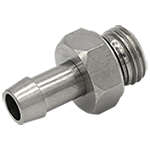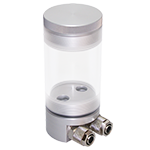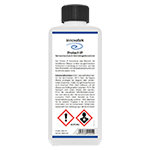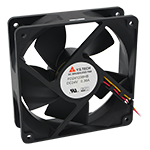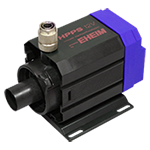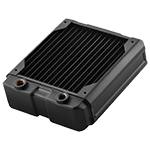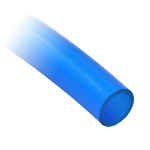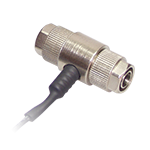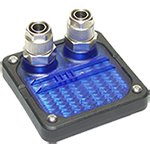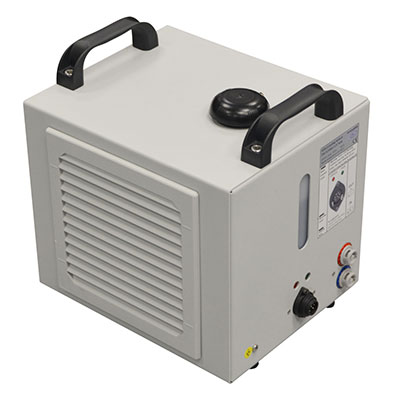Water cooling
The cooling of high-performance components is often a challenge, especially nowadays, which is made more difficult by a lack of space, sometimes very high power losses and external influences such as the ambient temperature. It is therefore no wonder that classic air cooling is increasingly reaching its limits.
As experts in the field of cooling, we offer you the optimal solution for your thermal problems with water cooling - for industrial applications as well as for private use. We take into account your ideas and specifications regarding water cooling in order to achieve the best possible cooling performance.
What is a water cooling system made of?
A water cooling system consists of several components, which together form a circuit. The most basic element is the hose, which connects all the other components and is also responsible for transporting the coolant within the water cooling system.
In addition to the hose and the coolant, a water cooling system includes the heat exchangers (water block and radiator), a pump, a coolant tank and the required fittings. Optionally, fans, sensors and control systems can also be installed, depending on the required performance and requirements.
In summary, you need the following components for a water cooling system:
In addition to these components, you usually also need the right thermal conductive material (e.g. thermal paste).
How does water cooling work?
The basic function of a water cooling system is relatively simple, as the coolant within the water circuit transports the waste heat (also known as dissipation or thermal energy) from point A to point B. However, a decisive advantage for choosing a water cooling system is that the coolant can absorb significantly more heat in a short period of time and release the absorbed waste heat at another point.
The heat is absorbed and released via heat exchangers, which are located within the water cooling circuit. The heat exchangers are colloquially referred to as water coolers for the intake and radiators for the output.
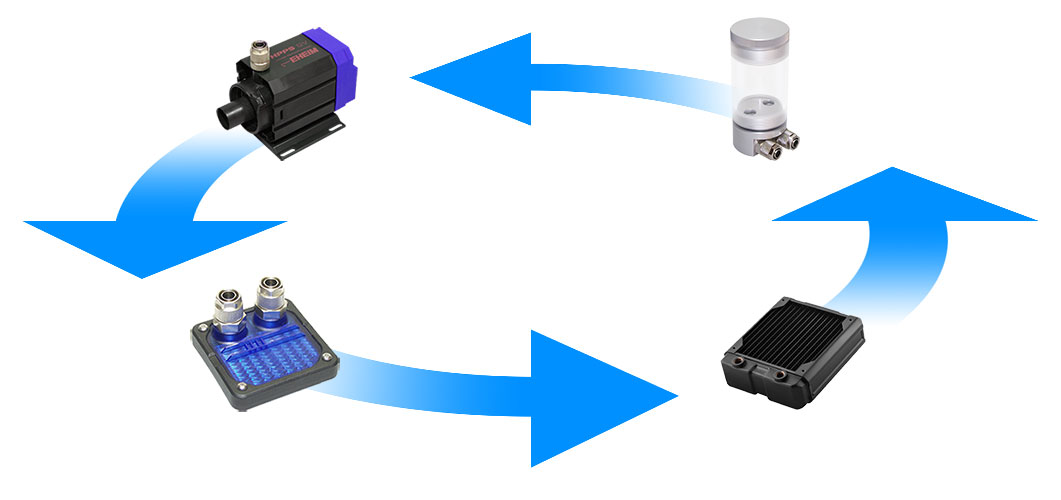 The circuit of a simple water cooling
The circuit of a simple water cooling
Water coolers are usually relatively compact because they are designed based on the available contact area of the heat source. Radiators, on the other hand, take up significantly more space because they have to dissipate the waste heat as quickly and effectively as possible to the surrounding air through their countless fins. Active radiators use fans for support, which increases the performance many times over.
In order to effectively transport the waste heat within the water cooling system from the water cooler to the radiator, a pump is used within the cooling system. This ensures the necessary circulation of the coolant contained in the water cooling system. The pump within the water cooling system must have sufficient power for the application in order to compensate for any existing heights within the water cooling system and to ensure sufficient delivery of the coolant. (Learn more about pumps)
An often underestimated problem is air pockets within the cooling circuit, which can reduce cooling performance. An expansion tank (coolant tank) is used to collect the air in the circuit during operation. In addition, the expansion tank is usually also used to fill the circuit. (Learn more about coolant tanks)
What can be cooled with water cooling?
There are hardly any areas of application where a professional water cooling system cannot provide significantly better and more effective cooling and thus increased stability of the component to be cooled. In the private sector, these are often 3D printers or computers, which benefit immensely from such a cooling solution. For this purpose, you can find a variety of components in our online store, which you can order with just a few clicks.
In the industrial sector, high-performance water cooling systems are increasingly found in opto-electronics (lasers, microscopes, etc.), medicine, radar and lidar technology (e.g. water cooling from the GESTRA space telescope) as well as within renewable energies and e-mobility.
Particularly within electromobility, the shift to renewable energies is creating an enormous demand for efficient and, above all, compact water cooling systems, as the waste heat here is sometimes immensely high and the required performance can only be guaranteed with optimal cooling. Water cooling systems developed and produced by us already ensure the stable operation of high-performance (storage-based) charging stations and (HPC) charging cables around the globe. Cooling batteries and electric motors is also no problem for us, and we can find a cooling solution for even the most complex requirements.
Water cooling is thus the perfect means of effectively solving thermal problems.
Everything from one source
We offer you pre-configured internal as well as external water cooling systems in our online store, which can be used for cooling in just a few steps. Alternatively, we offer you the design and development of a cooling solution that exactly fits your needs - including simulations and comprehensive consulting. Even the most difficult specifications and conditions are no problem for us, because we can solve any waste heat problem, no matter how complicated.
In addition to the development, we produce the cooling systems for you in our own production. Whether individual or series production, with us you have the expert for optimal cooling at hand.
You do not want to or cannot rely on cooling with the medium water? We would be happy to develop an oil cooling system for you that is optimally suited to your needs.
Please feel free to contact us by phone or email at any time if you are interested.
We are looking forward to your project!

